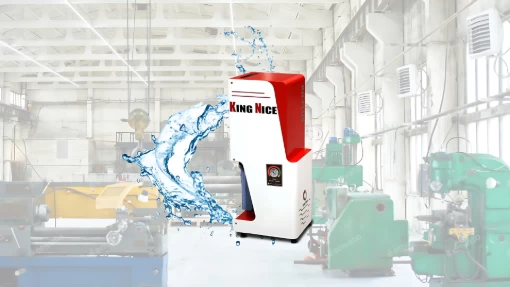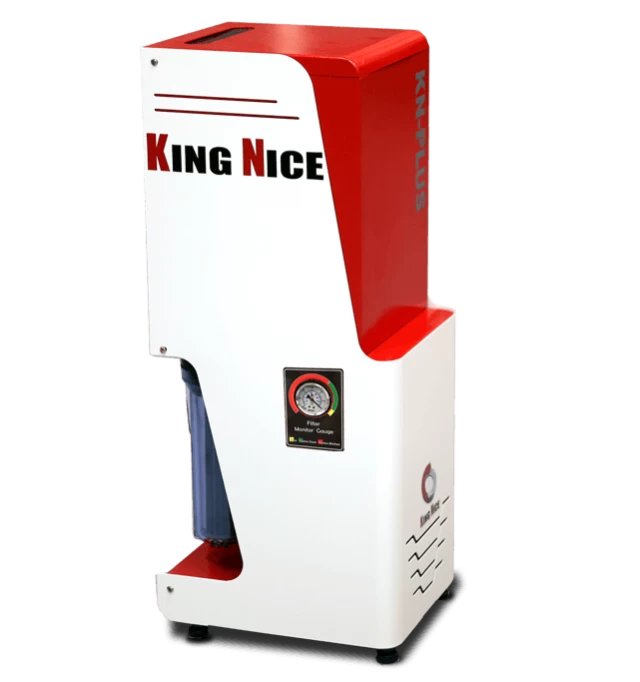What Is an Oil and Water Separator?

What Is an Oil and Water Separator? Definition, Applications, Principles, and Environmental Benefits
In industrial settings, managing oily wastewater isn’t just about compliance—it’s about protecting equipment, lowering costs, and meeting ESG goals. That’s where oil and water separators come in.
These systems are widely used in industrial facilities, marine environments, and maintenance operations to reduce pollution and comply with wastewater discharge standards.
Why Oil-Water Separation Matters
Water contaminated with oil—whether from machining coolant, stormwater runoff, or bilge discharge—can significantly degrade water quality, pose a threat to ecosystems, and result in regulatory violations.
Oil-water separators are used to remove these contaminants before wastewater is released into municipal drainage systems or natural water bodies.
Six Key Applications of Oil and Water Separators
Oil and water separators play a crucial role in various industries by preventing pollution and supporting clean production processes:
1. Wastewater Treatment Plants
They prevent oil and grease from entering rivers, lakes, or coastal waters.
2. Industrial Coolant Systems
They help maintain clean cutting fluids in CNC machines and other metalworking equipment.
3. Vehicle Maintenance Facilities
They are used in car washes, garages, and service bays to filter oily runoff and prevent sewer contamination.
4. Marine Bilge Systems
They remove oil from bilge water to ensure compliance with international maritime discharge regulations.
5. Mining and Oil Extraction Sites
They treat produced water to remove oil before reuse or environmentally safe disposal.
6. Smart Manufacturing and ESG-Focused Factories
They enable closed-loop recycling of emulsified coolants and fluids, helping manufacturers meet ESG and sustainability targets.
How Oil-Water Separators Work
Oil and water naturally separate because of their different densities, with oil rising to the surface. Modern separators accelerate and optimize this process using one or more of the following methods:
Gravity Separation
This is the most basic method, where oil and water are retained in a chamber long enough to allow natural stratification. It is effective for removing free-floating oils.
Coalescing Plate Separators (CPS)
These separators use corrugated or inclined plates to slow down the flow and encourage small oil droplets to merge into larger ones, which can then be easily removed from the surface.
Centrifugal Separation
This method uses high-speed rotation to push heavier water outward while lighter oil stays near the center. It is especially effective for separating emulsified oils and fine particles
Filtration
In certain systems, filters or absorbent materials are used to capture residual oil particles or sludge that pass through the initial separation stage.
Typical Design Features
A well-engineered oil-water separator typically incorporates the following design elements:
• Multi-chamber layout – Allows for staged sedimentation and oil separation through sequential flow paths.
• Coalescing media – Enhances the merging of small oil droplets into larger ones, improving separation efficiency.
• Sediment trap – Captures suspended solids and prevents clogging of downstream components.
• Oil skimmer or collection zone – Enables manual or automated removal of accumulated oil from the surface.
Environmental and Regulatory Benefits
Oil-water separators provide critical benefits that go beyond operational efficiency. These include:
Environmental Protection
Help prevent oil, grease, and other contaminants from polluting rivers, lakes, and marine ecosystems.
Regulatory Compliance
From EPA to MARPOL, most industrial facilities face strict discharge regulations. Installing a reliable oil-water separator isn’t just best practice—it’s a legal necessity in many sectors.
Cost Savings
Lower operational costs by reducing fluid replacement frequency and avoiding penalties for non-compliance.
Equipment Protection
Safeguard pumps and pipelines from clogging and corrosion caused by contaminated wastewater.
KingNice’s Solution: Advanced Oil-Water Separation for Smart Manufacturing
KingNice Technology specializes in centrifugal oil-water separators engineered to meet the demands of today’s high-performance manufacturing environments.
Our systems combine high-speed centrifugal separation with modular filtration units to deliver:
- Consistent and reliable management of emulsified coolants
- Fast installation with zero interruption to production
- Reduced operating costs through coolant recycling and minimal maintenance needs
From CNC workshops to large-scale metalworking operations, KingNice’s oil-water separators ensure regulatory compliance, operational efficiency, and long-term sustainability.
Explore the KN-I Series – KingNice’s flagship solution, trusted by leading manufacturers for its consistent, high-capacity separation performance.
"Ready to take the next step? Contact our team today to explore a solution tailored to your needs."
Updated: 2025-07-18
